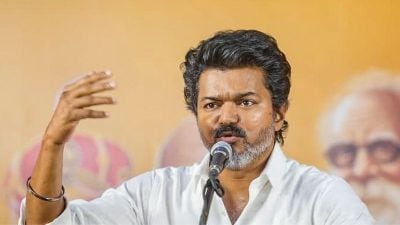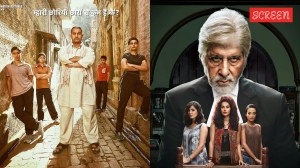New rules and four puzzles
So, TV news has given itself guidelines on covering ‘emergency’ situations and a Supreme Court judge, the widely respected J S Verma...

So, TV news has given itself guidelines on covering ‘emergency’ situations and a Supreme Court judge, the widely respected J S Verma, will head the dispute redressal authority. How are the guidelines?
It’s best to avoid high-sounding principles in such cases. They may appear to be dodges even when they are not meant to be. All emergency-related news, we are told, will be “tested on the touchstone of public interest”. This is doubtless an elegant if somewhat overused phrase — but what are we to make of it? Will all members of the National Broadcasting Authority (the industry body) define public interest the same way in case of an ‘emergency’? Or will the definition be allowed to vary? What is the applicability of this guideline? Without an answer, the guideline looks as if it’s broad enough a priori to accommodate almost anything post facto.
More puzzling is this exhortation: “the media has a responsibility to disseminate information which is factually accurate and objective”. Parenthetically, let me observe that all of us journalists, in print and TV, should wonder about the phrase ‘factually accurate’, which finds liberal usage in journalese. Can we be factual and inaccurate simultaneously?
Anyway, what was the point of restating the Journalism 101 boilerplate that media should be factual (or accurate, take your pick) and objective when framing guidelines inspired by coverage of a specific situation? Even TV news critics are not saying the Mumbai attack coverage was awfully inaccurate and/or grossly subjective. And this piece of piousness doesn’t even look like a dodge. Then why have it?
This is as baffling as these four things seen on TV news:
1. CNN-IBN’s ticker on Wednesday night informing that OPEC has cut oil output by 4.2 million barrels per day (bpd). The cut was 2.2 million bpd. The previous cut was 2 million bpd. If the news desk was adding the two up, the text should have reflected that. It’s strange why information available on every wire service should produce such confusing creativity.
2. An Israeli ‘counter-terror expert’ and a guest on one of Times Now’s many, many discussions on terrorism saying “I hear many voices”. It was tempting to think he was offering a dark and pithy summing up of TV news talk shows. But it was an audio problem that kept happening as the anchor asked him questions on India’s new anti-terror law.
3. On Headlines Today, actors, jewellery designers, cricketers, journalists taking a pledge to wage a ‘war on terror’. So, this is what? Our non-state actors, who are undoubtedly good and decent in this case, versus their non-state actors, who, as evidence shows, are neither good nor decent? Also, on Headlines Today, an evening anchor’s extraordinary comparison: Wrapping up an item on Bush and the flying shoes and moving to an item on Kasab, he tells viewers while Bush is probably the most hated man in the world, Kasab is probably the most hated man in India. How does a journalist so casually compare a terrorist to a democratically elected head of state? Or, if you want to, be explicit about your views. The disgraceful conduct of the Iraqi journalist was at least informed by anger. Being unthinkingly flippant is somehow worse.
4. NDTV airing a documentary on Kashmir and then an interview with Sheila Dikshit when CNN-IBN and Times Now were providing rolling news and news-based discussions. The time was peak evening viewing hours. You have to wonder whether this is a smart strategy. The Dikshit interview was good, both interviewer and interviewee offering that rare thing on TV news: measured conversation. But I had to switch away from it frequently because competitor channels were offering news.
Coming back to the guidelines, they bar live chats with terrorists as well as with security personnel and victims when an operation is on. Security operations are not to be compromised in any way. Plus, viewers must not be subject to repeat plays of ‘gory’ images. All but the last are unexceptionable. I am a little uncomfortable with an edict, however vague, on how TV news should show blood and gore. A guideline on this could encourage the excessively sensitive to lodge complaints when infractions are most likely to be minor.
It will be unfair to prejudge how TV news will comply with these don’ts. But if all channels do follow the rules, one interesting implication of the next ‘emergency’ coverage could be that channels with better quality journalists and news planning may beat those without these attributes. This doesn’t always happen now because the second lot often gets more eyeballs by doing all kinds of dodgy things with more gusto than the first lot has the stomach for.
Under the new rules, TV channels will need to fill up ‘emergency’ coverage airtime with discussions, analysis, backgrounding the story, etc. The ‘quality’ channels should score. It will be, shall we say, an opportunity to demonstrate their quality.
saubhik.chakrabartiexpressindia.com







- 01
- 02
- 03
- 04
- 05
























